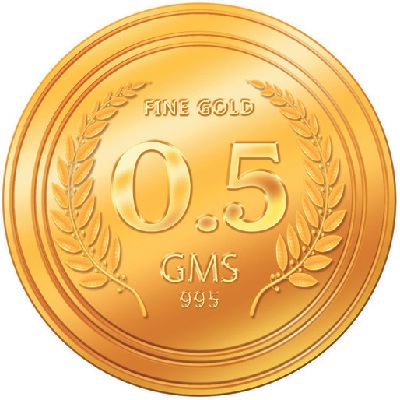Mandatory Hallmarking for a Better Industry

The Government’s move of making Hallmarking mandatory might finally put an end to unscrupulous practices that are affecting the industry at the moment and create an environment that is far more transparent and beneficial for the end consumer. However, rolling out mandates in a phased manner will safeguard the interests of small jewellers who are concentrated in Tier II and Tier III cities says Vijetha Rangabashyam.
Towards the end of last year, the Indian Government gave a mandate stating that all gold jewellery sold in the country must be compulsorily hallmarked from January 2018. Since the announcement was made at a seminar on World Standards Day by Union Minister for Consumer Affairs Ram Vilas Paswan during November last year, the jewellery industry seems to be divided on the decision.
Though this is a move to increase transparency in the industry and safeguard the interests of the consumers, the general opinion amidst jewellers seems to be that India doesn’t have the necessary infrastructure to pull off this decision and with such a mandate, the jewellers in Tier II and III cities would grossly suffer. However, if the regulation is implemented in phases, hallmarking would definitely prove to be a welcome change for the industry as it will not only ensure purity of Indian gold and increase consumer confidence but also increase exports of gold jewellery for the country. ‘Hallmarking is not something new. Some countries have it and some don’t. Even the US doesn’t have hallmarking. In India, we didn’t have the technical expertise to determine the purity of gold 20-25 years ago. Making jewellery is an art, but making jewellery of certain purity is a science,’ says Pankaj Parekh, Former Vice-Chairman, GJEPC.
The Problem of Under-Caratage
Why is a nation with such adulation for gold and gold jewellery still devoid of regulations that ensure its quality? This is an obvious question that arises when we think of the lack of hallmarking regulation or its implementation thereof for gold in this country. As of 2015, Indian households owned approximately 22,000 tonnes of gold and about 600 tonnes of gold has been used in jewellery production every year. However, under-caratage has been a universal concern for years now and this has also severely impacted the industry’s potential to strengthen itself on the export front. ‘When you solder two parts of metal which has the same melting temperature, you need a flux. Soldering needs lower melting temperature. Gold has much higher temperature than silver, copper or zinc. Historically, artisans were adding more copper during soldering. Arithmetically speaking, an intricate piece of jewellery has anywhere between 12 to 20 per cent of solder. Say on an average if there is 15 per cent less purity than the carat metal, then the end result on the designing will be poorer. We knew that gold makes an alloy only with silver or copper and if you add iron or any other metal to it, gold will lose its malleability. But modern science says that if you mix it in a certain manner, we can still retain its malleability,’ adds Parekh.

Though efforts have been made by the Bureau of Indian Standards (BIS) to improve the hallmarking standards in this country, under-caratage is still an issue that is plaguing the industry – nearly 10 to 15 per cent of gold jewellery on an average is affected by differences in purity. Having said that, implementing hallmarking regulations is not an easy task considering the Indian gold industry largely contains small jewellers, especially in smaller towns, who have been operating without license and accreditation. The transaction that happens between these jewellers and their customers is purely based on trust over the years, but some jewellers take undue advantage of the lack of stringent hallmarking regulations for gold.
Current State of Hallmarking in India
Though India is known for its thriving gold-jewellery market and its production of intricate handmade jewellery, the lack of a universal standard to ensure gold’s purity led the BIS to introduce hallmarking standards modeled after the UK in the year 2000. Around 500 hallmarking centers have been opened since and around 13,000 jewellers have been accredited in the country – the issue of undercaratage has reduced considerably, but the problem doesn’t end there (refer Figure 2). ‘Towards the end of 1999, the Indian government gave BIS responsibility of quality control standards. It has been 17 years and hallmarking is happening in India voluntarily. Around 21,500 jewellers have been doing it voluntarily. During the last fiscal year, 3.16 crore jewellery have been hallmarked and approximately 500 tonnes worth of gold has been hallmarked,’ says Harshad Ajmera, President, Indian Association of Hallmarking Centres
As of 2015, many retailers sell both hallmarked and non-hallmarked jewellery simultaneously and only less than one-third of jewellery in the entire country is hallmarked. Though the policies laid out by the BIS are sound, the assaying centers entrusted by the BIS don’t have state-of-the-art infrastructure and adequate staff to implement the guidelines. By the same token, many assaying centers are grossly under-utilized. But Ajmera refutes, ‘There are 544 hallmarking centers spread across India today. All of them work every day. An average of 221 pieces is hallmarked everyday but each center has the capacity to hallmark 2020 pieces. 15 per cent of these centers are underutilized.’ The jewellery sector in India that is predominantly unorganized often resist to hallmarking as they vastly gain from undocumented sales to evade tax. ‘The government is preparing guidelines and once these guidelines are notified then the law would come into effect. All jewellers need to take hallmark license and an online system for license would start soon. May be it will take six months for this process to take place,’ adds Ajmera.

The hallmarking process in India is designed in a manner that is thorough and accurate. Every piece of jewellery submitted to a certified assaying center is supposed to undergo many visual and technical checks before being hallmarked. But whether or not the hallmarking centre performs to its fullest ability is a matter of debate. Each hallmarking centre employs an average of 7 employees and it costs about 60 to 80 lakhs to set up a hallmarking centre. The operating costs of these centres are approximately 60 lakhs which mostly include paying salaries and renting the space and each hallmarking center is also expected to pay a fee to the BIS. A standard fee of Rs 25 is charged for every item hallmarked. Going by these figures, for a hallmarking centre to breakeven, a minimum of 750 articles need to be hallmarked. However, many of these centers are underutilized and hence, it becomes economically unviable for hallmarking centres to sustain.
In 2012 for instance, all 270 jewellery shops in Idukki district of Kerala obtained BIS licences. However, after the campaign to sell only hallmarked jewellery lost traction, many of these jewellers withdrew their licences and the only hallmarking centre in the area had to shut shop owing to lack of business.
The Urban Rural Divide
The fact of the matter is, at present, many assaying centres are concentrated only in metros. In its 2015 report, theWorld Gold Council said 60% of hallmarking centres are in India’s 20 largest cities and even within cities, they are often clustered in certain areas. The centres are mainly located next to manufacturing hubs like Chennai, Mumbai, Kolkata, Ahmedabad, Rajkot, Coimbatore and Trichur. ‘All the jewellers in metros can comply with hallmarking as there is enough number of assaying centers in the cities. But in the tiniest of hamlets, where the goldsmith himself is a jeweller, there is no electricity, there is no bank and there is definitely no assaying centre, how will he get his jewellery hallmarked? In the UK, jewellers can send it to Birmingham or London to get their pieces hallmarked because their infrastructure is phenomenal. Whereas in our country, if you ask a jeweller from a small town to travel to a big city for his jewellery to get hallmarked, he is a very soft target and he will be looted. So hallmarking centers need to gradually open up in smaller towns or districts where say a minimum of 20 km of travel is required, not an overnight journey,’ says Parekh.
Today, India has 5 lakh jewellers and only 40 per cent of these jewellers are located in the cities (refer figures 4,5,6,7,8). Making hallmarking compulsory without setting up assaying centres in tier II and III cities will be detrimental to the jewellers who operate in these cities. ‘Government doesn’t have the necessary infrastructure to make hallmarking mandatory in smaller cities. These cities don’t even have manufacturing centers where both manufacturing and hallmarking can be done. So we have to totally rely on metros for hallmarking. Till the time all districts and towns have hallmarking centers, it should not be made mandatory,’ says Ashok Vastani, Director, Dass Jewellers, Nagpur.

However, some jewellers remain optimistic and say that more number of assaying centres will be developed in smaller towns only when a mandate is imposed. ‘It is actually a really good initiative from the Government’s side to make hallmarking mandatory. This would mean that consumer will gain more confidence in our products. This way any doubt regarding the purity of gold is eliminated. There is of course the question of the reach not being there in tier II or III cities but only when it is made compulsory, some kind of pressure will be there to build more centers,’ says Kishan Surana, Managing Partner, Sri Krishna Jewellery, Bangalore.
‘From IBJA’s point of view, we fully favour mandatory hallmarking and it should be implemented as early as possible. But any new regulation that is going to be implemented can only be done so in a phased manner. The necessary infrastructure is already in place in metros but that is not the case with smaller cities. But the addition of assaying centres in smaller towns will definitely happen gradually and I don’t see why that should prevent making hallmarking mandatory,’ says Surendra Mehta, National Secretary, India Bullion and Jewellers Association.
Don’t Eliminate Carats: Jewellers
Under the new Bureau of Indian Standards (BIS) Act 2016, only categories of 14, 18 and 22 carat must be sold; this issue in particular has left many jewellers in a tough spot because according to them there is still a demand for 20, 23 and 24 carat gold in this country. Many jewellers have urged the Ministry of Consumer Affairs to include 20 carat as a category in hallmarking standard. 14 carat jewellery is valued at 58.33 per cent of gold purity in Hallmark Standards and 18 carat jewellery is valued at 75 per cent of gold purity. These standards are nowhere close to 22 carat jewellery, which is valued at 91.60 per cent of gold purity and is mostly used in weddings and special occasions, especially in the South. But there is also a demand for 20 carat gold, which is mostly given as gifts at weddings. Removing this category would mean robbing the mid and small scale jewellers of their businesses. Vehemently opposed to this idea, Pankaj Parekh says, ‘It is essential that any carat is allowed in the market. A jeweller cannot be dictated what carat he can or cannot sell. Having said that because of some dishonest jewellers who sell lower purity gold as high purity, the government has reduced the slabs of caratage to 14, 18 and 22. There should be a definitive law in place to punish a jeweller who is selling 20 as 22 but a jeweller should not be denied the liberty of selling whatever carat he wants to sell.’

Between 2000 and 2015, a total of 9 caratages were permitted to be hallmarked. However, based on extensive research, the BIS has said that maximum demand exists only for 14, 18 and 22 carat jewellery. Including so many caratages does not protect the interests of the end consumer, who is often duped by being sold low caratage jewellery for a higher price. ‘We have also represented this to the government. But the government has got back to us saying they have done a survey which all leads to the maximum demand only for 14, 18 and 22 carats. Eventually, these slabs are arrived at based on surveys and are backed by figures,’ says Surendra Mehta.
Some retailers however believe that imposition of such rules and removal of caratages affects retailers the most. ‘The rules imposed on hallmarking by the Government are often binding only for the retailer. The manufacturer sells to wholesaler and the wholesaler in turn sells it to retailer. The retailer takes the jewellery to the hallmarking center to verify if the gold is of certain purity. If there is a problem after the sale of a particular piece regarding purity, then the entire responsibility falls on the retailer but not the hallmarking center. They are charging us a fee for getting our jewellery hallmarked but there is no liability on them whatsoever if something goes wrong,’ adds Ashok Vastani. In the long run, making hallmarking a part of the manufacturing process makes more practical sense. Agreeing to this, Vikram Jain, Director, Kanakratna Exim, one of the leading manufacturers of gold jewellery in India says, ‘It would be mutually beneficial and be more viable to hallmark by manufacturer/wholesaler. We are very much ready for the hallmarking to be done at our end as per retailers ease.’
While most retailers agree that Hallmarking should be introduced to inculcate more transparency in the market, totally doing away with 20, 23 and 24 carat may affect businesses of jewellers. ‘In this industry, diamond and colour stone jewellery come in 18 carat, plain gold jewellery in 22 carat and traditional jewellery is made either in 23 or 24 carats. Hallmarking for 23 carat was there last to last year. I would suggest that the Government should have hallmarking for 23 and 24 carat but with some kind of additional security for the consumer. But it should definitely not be removed,’ says Surendra Pal Singh, Managing Director, Neelkanth Jewellers, Pune.

Phase it Out, Increase Customer Awareness & More Onus on Manufacturers
Unlike other jewellery industries, the Indian jewellery industry is complex and highly fragmented. Many of the jewellers are not organized and this is true when it comes to manufacturers as well. Implementing Hallmarking mandate on the whole Nation at one go is not practical for a country that clearly doesn’t have that many assaying centres to support the same. To prevent hindering the businesses of those jewellers concentrated in smaller towns and districts, the mandate has to be carried out in a phased manner. It could be made compulsory in Tier I and Tier II cities first where the infrastructure is in place. World Gold Council in a statement recently said that rolling out of mandatory hallmarking should be done in three phases and this would be the most beneficial for the industry. The first phase could cover India’s 22 largest cities, from Mumbai and New Delhi to Nagpur and Patna. The second phase, beginning a year later, can cover around 700 district headquarters. The third phase would begin in (next) one or two years to roll out programme across India.
While there is responsibility on retailers to sell only best quality gold to consumers, Hallmarking as a practice will only work if manufacturers also maintain integrity in terms of caratage and purity. ‘It only becomes difficult if the entire onus is on hallmarking centers. The responsibility should also be on manufacturers to manufacture jewellery only in 14, 18 and 22 carat gold,’ says Surendra Mehta. Countries that have followed models wherein manufacturers produce jewellery only of a certain standard have proven to be extremely successful. This would mean establishing a clear cut channel between retailers and manufacturers. In its report, the World Gold Council recommends including separate licensing requirements, as well as special considerations for talented small-scale or artisan manufacturers and also defining exclusive policy to supervise and monitor manufacturers.
Most of all, there is a big responsibility on the jewellery industry as a whole to create awareness about quality and hallmarking amidst consumers. Baring the affluent and educated class, a large chunk of the consumers are indifferent about buying gold that is hallmarked and this is mainly because of the lack of awareness. Consumers in the rural areas are completely unaware of BIS hallmarking. Hallmarking so far has been optional only because consumer awareness is very poor on the subject, hence jewellers are not obligated to get their products hallmarked. In Singapore for example, though only a few retailers and manufacturers are certified by the Singapore Assay Office, consumer awareness programs are widely prevalent and are encouraged by retailers. A collective effort by manufacturers, wholesalers, hallmarking associations and retailers has to be made to impart and educate consumers regarding purity of gold and hallmarking.
Be the first to comment